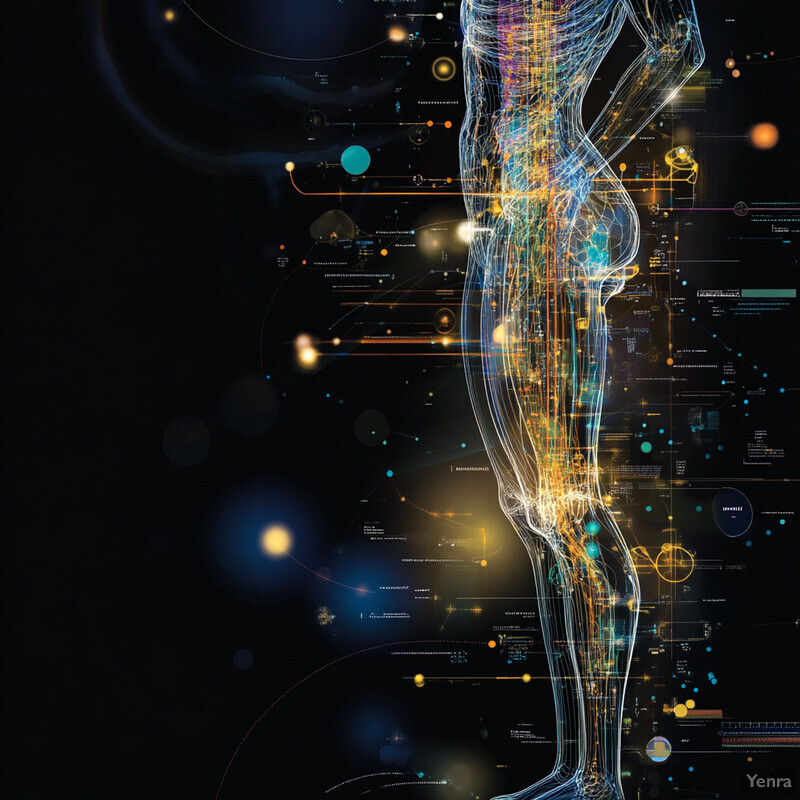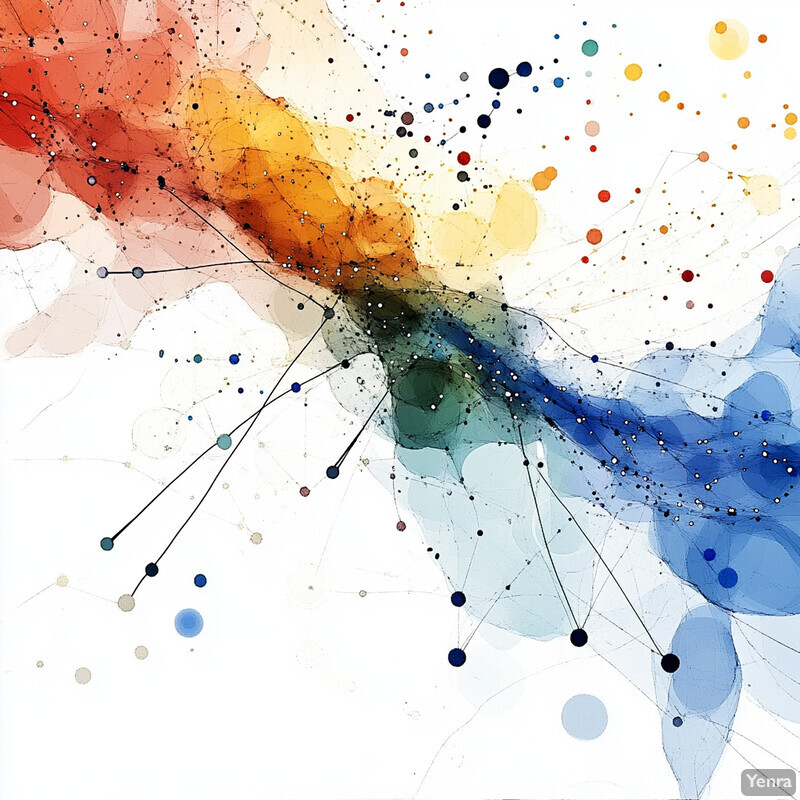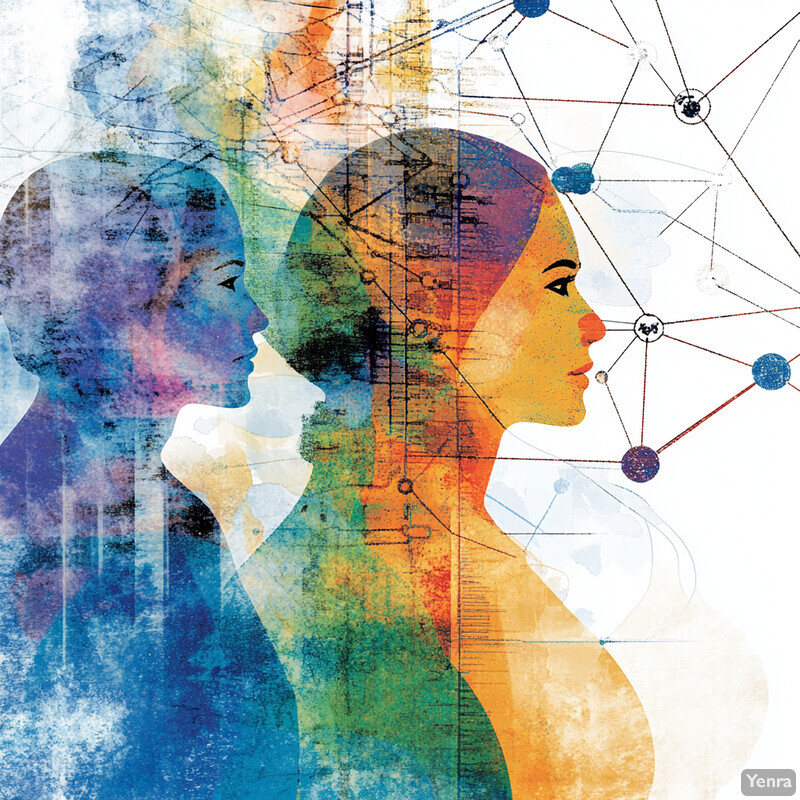1. AI-Driven Target Identification
Artificial intelligence is transforming the hunt for new drug targets by sifting through massive biological datasets to pinpoint previously unknown disease mechanisms. Machine learning models can analyze genomic, proteomic, and clinical data to find molecular targets that had been overlooked, thereby expanding the “druggable” landscape for known compounds. This approach increases efficiency in drug repurposing by reducing guesswork – instead of relying on serendipity, AI systematically links existing drugs to newly discovered targets. For example, AI-driven analyses have identified thousands of potential drug–disease links that researchers can now pursue, vastly broadening repurposing opportunities. Overall, AI-guided target discovery accelerates the repurposing pipeline by focusing attention on the most promising therapeutic targets identified in silico, which can then be validated in the lab.

Recent successes underscore the power of AI in target identification. In 2024, researchers at Harvard developed a graph neural network model (“TxGNN”) that analyzed extensive biomedical data and predicted new treatments for over 17,000 diseases, many of which had no prior therapies. This represents the largest scope of diseases tackled by a single AI model to date. Another noteworthy case came early in the COVID-19 pandemic: an AI-powered knowledge graph tool by BenevolentAI identified the rheumatoid arthritis drug baricitinib as a potential COVID-19 treatment by uncovering a novel antiviral target pathway. Notably, baricitinib was subsequently shown in clinical trials to reduce COVID-19 mortality, validating the AI’s hypothesis. These examples illustrate how AI can rapidly connect the dots between existing drugs and new biological targets, generating repurposing leads that might have taken humans years to find, if ever. By learning from vast datasets and past successes, AI systems continue to improve in accuracy, making drug target discovery faster and more data-driven than traditional lab approaches.
2. Multi-Omics Integration
AI models can integrate multiple “omics” layers of biology – genomics, transcriptomics, proteomics, metabolomics – to reveal hidden connections that single data types might miss. By analyzing these complex datasets together, AI uncovers holistic molecular patterns linking drugs and diseases. This multi-omics fusion provides a systems-level view: for instance, an AI might find that a drug affecting a particular gene expression profile also modulates corresponding protein networks and metabolic pathways associated with a disease. Such comprehensive insights help identify existing drugs that could correct a disease’s multi-layered dysregulation. The integration of diverse data also improves specificity (fewer false leads) because a candidate drug must consistently show a beneficial signature across all omics layers. In short, multi-omics AI approaches enable drug repurposing decisions to be informed by the full complexity of biology rather than one snapshot, increasing the chance of discovering viable new uses for old drugs.

Multi-omics AI techniques have already yielded promising repurposing candidates with supporting mechanistic evidence. In cancer research, for example, a 2024 deep-learning model called DeepDRA was trained on combined genomic, transcriptomic, and drug-chemical data to predict tumor drug responses. This model achieved an impressive precision–recall AUC of ~0.99 in identifying effective drug–cancer matches, far outperforming earlier single-omics methods. Meanwhile, in neurology, a 2024 study took a network-based multi-omics approach to amyotrophic lateral sclerosis (ALS) and identified 105 genes linked to ALS pathology by integrating genomic (GWAS) signals with brain proteomic and epigenomic data. By mapping these genes onto known drug–target networks, the researchers pinpointed two existing drugs – diazoxide (a vasodilator) and gefitinib (a cancer drug) – as repurposing candidates for ALS. Laboratory tests confirmed the predicted effects of these drugs on ALS-related pathways, lending credence to the multi-omics predictions. These cases demonstrate that AI-driven integration of diverse biological data can successfully spotlight drugs with multi-faceted therapeutic potential that would be difficult to discern with any single data stream.
3. Predictive Modeling of Drug-Target Interactions
AI-driven predictive modeling significantly improves our ability to forecast how drugs will bind to biological targets, which is crucial for repurposing decisions. Traditional drug–target prediction often relied on limited similarity heuristics or laborious experiments, but modern deep learning models (including graph neural networks and transformer-based models) can learn complex chemical–protein interaction patterns from large datasets. These models take into account molecular structures, protein sequences or 3D structures, and known interaction data to predict new drug–target pairs with high accuracy. In drug repurposing, this means AI can screen thousands of approved drugs against hundreds of potential disease targets in silico, flagging promising matches that warrant experimental validation. Improved drug–target interaction (DTI) predictions reduce the trial-and-error in repurposing: unlikely pairs are filtered out early, focusing resources on the most plausible drug candidates that engage the disease biology. Overall, AI-based DTI modeling acts as a virtual “matchmaker,” efficiently pairing existing drugs with new targets and thereby uncovering novel therapeutic uses.

The accuracy and scale of AI DTI predictions have reached levels that were unattainable a decade ago. For instance, an attention-based graph neural network model published in 2024 constructed a multilayer network of drug–target relationships and achieved superior performance over earlier approaches. In comparative tests, this model – which combines graph convolution with self-attention – outperformed conventional docking and similarity methods in identifying true drug–protein interactions, underscoring an increase in prediction precision thanks to AI. Quantitatively, other deep models report high predictive metrics: a 2024 system (DRAW) that formulates drug–disease link prediction as a graph traversal task attained an AUC of 0.903 (90.3%) in cross-validation, correctly ranking likely repurposing candidates far better than random chance. Additionally, AI-enabled platforms integrate protein structural data (e.g., from AlphaFold) into DTI predictions, further enhancing their reliability. Such robust performance means that when these models suggest a drug can bind a new target, there is a strong likelihood of experimental confirmation. Indeed, some AI-predicted interactions have been validated – for example, AI tools helped predict how certain antivirals could bind novel viral proteins during the COVID-19 response, accelerating repurposing trials. These advancements illustrate that AI is making DTI prediction both faster and more trustworthy, which directly benefits drug repurposing efforts.
4. Natural Language Processing for Literature Mining
AI-powered natural language processing (NLP) is revolutionizing how scientists mine the biomedical literature for repurposing clues. Every year, hundreds of thousands of new papers and reports are published – far more than any human can read. NLP algorithms can rapidly scan this vast corpus of text (journal articles, clinical trial reports, patent filings, even doctors’ notes) to extract relevant insights about drugs and diseases. These AI systems use techniques like text classification, named-entity recognition, and relationship extraction to find mentions of off-label drug uses, unexpected treatment effects, or mechanistic links that hint at a new therapeutic use. For example, an NLP tool might flag that a cancer drug frequently appears in case reports improving an inflammatory condition, suggesting a repurposing hypothesis. By automating literature review, NLP reduces human error and bias – it can uncover subtle connections that a researcher might overlook. The result is a significantly accelerated hypothesis generation process: instead of months of manual reading, AI can surface key evidence in minutes, giving researchers a head start in identifying repurposing opportunities documented across the global literature.

One striking demonstration of NLP in drug repurposing is the recent development of literature-based discovery pipelines. In 2024, a research team introduced an AI system called “PubDigest” that combed through millions of PubMed abstracts to propose treatments for a rare lung disease (CTEPH). This NLP-driven approach identified an intriguing connection: it found that CTEPH shared many textual associations with “venous thrombosis” in the literature, and from that link, it spotlighted the drug amiodarone (traditionally a cardiac arrhythmia medication) as a potential therapy for CTEPH. This hypothesis emerged by recognizing a pattern in published case reports and experimental studies that manual reviewers had not synthesized. The researchers then took it a step further – they tested amiodarone in lab assays and confirmed it significantly reduced pathological platelet aggregation by 68% in a CTEPH model. Notably, the same AI pipeline also pulled in real-world evidence and in vitro data (making it a multi-modal approach), but it all started with NLP flagging the drug–disease pair from text. In another example, a 2023 study used NLP on clinical notes to identify metformin’s off-label cognitive benefits, aligning with epidemiological findings that metformin users had lower Alzheimer’s incidence. These cases illustrate how NLP can sift oceans of text to find actionable signals – effectively turning anecdotal observations scattered across papers into solid hypotheses for drug repurposing.
5. Knowledge Graphs and Reasoning Engines
AI-driven knowledge graphs are helping researchers navigate the complex web of relationships between diseases, drugs, genes, and biological pathways, making it easier to generate repurposing hypotheses. A knowledge graph (KG) is a network where nodes represent entities (like a drug or a protein) and edges represent relationships (like “inhibits” or “associated with disease”). By integrating heterogeneous biomedical data into a KG – clinical findings, molecular data, side effects, etc. – AI reasoning engines can traverse these connections to infer new links. In drug repurposing, this might mean finding a path: Drug A → Protein X → Disease Y, suggesting Drug A could impact Disease Y. Unlike siloed data analysis, knowledge graphs provide a holistic view; an AI can follow multi-step connections (multi-hop reasoning) that chain through different domains of knowledge. Additionally, KGs support logical inference: if Drug A treats disease Z and disease Z shares a pathway with disease Y, the AI can reason that Drug A might help disease Y. This graph-based approach goes beyond simple similarity matching, allowing “creative” leaps grounded in known biology. By systematically exploring the KG, AI can reveal non-obvious drug–disease pairs that have supporting evidence across the network of biomedical facts.

One notable success of knowledge-graph-driven repurposing is the discovery of baricitinib for COVID-19. In early 2020, researchers augmented a biomedical KG (with data on viruses, human proteins, and drug targets) and used an AI reasoning engine to query treatments for SARS-CoV-2. The AI navigated connections and identified baricitinib – a JAK1/JAK2 inhibitor for rheumatoid arthritis – as a promising candidate that could interfere with the virus’s entry and inflammatory damage. This hypothesis emerged from the graph: baricitinib was connected to the AP2-associated protein kinase (a host factor for viral uptake) and also to inflammatory cytokine pathways, aligning with COVID-19 pathology. Within months, baricitinib was tested and found to significantly improve outcomes in COVID-19 patients, leading to its emergency use authorization. On a broader scale, knowledge graph approaches have been applied to many diseases. A 2023 open science effort constructed the OREGANO knowledge graph, integrating data from 20+ sources (drug–target databases, clinical trials, etc.) to enable computational repurposing. Using this KG, machine learning algorithms performed link prediction and highlighted dozens of approved drugs with potential new targets, providing leads for conditions like cancer and neurodegeneration. The advantage of these graph-based predictions is that they come with an “explanation” – the path through the graph serves as a rationale (e.g. Drug A → gene M → pathway N → Disease B), which experts can evaluate. As seen with baricitinib, these AI-recommended paths often hold up under scrutiny and can rapidly advance to clinical testing.
6. High-Throughput Virtual Screening
AI is dramatically accelerating high-throughput virtual screening, enabling researchers to computationally evaluate enormous libraries of compounds against disease targets with unprecedented speed and accuracy. In virtual screening, algorithms simulate the interaction between a drug molecule and a biological target (such as a protein) to predict binding affinity. Traditionally, such simulations (like molecular docking) were time-consuming, limiting the number of compounds that could be screened. Machine learning has changed the game: AI models can learn from prior docking results and quickly filter out unlikely compounds, focusing computation on the most promising candidates. This has made it feasible to screen ultra-large chemical libraries (millions to billions of molecules) in a fraction of the time. Moreover, AI can incorporate not just static structures but also various features (e.g., physicochemical properties or even quantum mechanics approximations) to improve prediction quality. For drug repurposing, this means we can swiftly scan all approved drugs (and even discontinued ones) against a new target to see which might bind well – effectively a computational triage that replaces months of lab experiments. The end result is a faster discovery of repurposing hits, which can then be validated experimentally, compressing the timeline for advancing candidates.

The scale-up achieved by AI in virtual screening is illustrated by recent benchmarks. In 2025, scientists reported an AI-guided workflow that screened 3.5 billion molecules for activity against a receptor in a matter of weeks – something utterly unmanageable without AI assistance. They did this by first docking a representative subset (1 million compounds) and training a machine learning classifier (a CatBoost model) on those results to predict docking scores. That classifier then narrowed down the best candidates from the billions, reducing computational cost by over 1,000-fold while still identifying true binders in the top ranks. On a smaller but clinically relevant scale, AI virtual screening has been applied to repurpose drugs for specific targets. A 2024 study used a fully automated AI ligand-screening tool to evaluate 12 million chemical compounds from the ZINC database for the ability to inhibit tau protein aggregation (a key pathology in Alzheimer’s). The AI rapidly shortlisted 33 hits, which were then filtered to 10 top candidates; several of these have structures akin to known neuroprotective agents. Such outcomes demonstrate the synergy of speed and accuracy that AI brings – billions of interactions can be sifted to pinpoint the handful of most promising drug molecules. For repurposing, often the libraries screened are the set of known drugs: notably, pharma companies have used AI platforms to screen all existing approved and shelved drugs against emerging disease targets (as was done during COVID-19). This led to quick identification of molecules like famotidine and raloxifene as COVID-19 antiviral candidates via computational screening, which then moved into clinical trials in months. In sum, AI-driven high-throughput virtual screening has made the initial hit-finding step for repurposing far more efficient, uncovering viable drug leads at a pace that keeps up with public health needs.
7. Automated Hypothesis Generation
AI platforms can autonomously generate and prioritize new drug–disease hypotheses at a scale and speed that humans alone cannot match. Traditionally, proposing a repurposing hypothesis required experts to manually piece together clues from disparate sources, a process that is slow and can miss non-intuitive connections. AI changes this by ingesting vast amounts of data (literature, clinical records, molecular data) and proactively suggesting plausible repurposing ideas. These systems often use advanced language models or reasoning algorithms to combine facts: for example, an AI might read that Drug X reduces inflammation and that Disease Y involves an inflammatory pathway, and thus propose Drug X for Disease Y. Some platforms generate hypotheses through brute-force combination – examining every drug versus every disease – but weighted by learned indicators of success (such as shared gene signatures or pathway overlap). The output is a ranked list of drug repurposing candidates, each essentially a hypothesis ready for testing. Importantly, automated hypothesis generation isn’t random: the AI uses prior knowledge to ensure the suggestions have a rational basis (e.g. known mechanism, anecdotal clinical hints), making them credible starting points. This capability effectively creates an “idea engine” that constantly scans for new therapeutic opportunities, ensuring promising leads don’t remain hidden in the deluge of biomedical data.

A cutting-edge example of AI hypothesis generation comes from the use of generative AI (large language models) in drug repurposing. In 2024, researchers demonstrated that GPT-4 (ChatGPT) could function as a “co-scientist” by generating novel repurposing hypotheses for Alzheimer’s disease. They prompted ChatGPT with the task of proposing the 20 most promising existing drugs for Alzheimer’s, then refined the list by asking it to double-check its rationale. The AI produced dozens of suggestions – including compounds like metformin, simvastatin, and losartan – purely from its learned knowledge of medicine. Remarkably, when the team investigated these AI-suggested drugs in real-world patient databases, they found that at least two, metformin and simvastatin, were indeed associated with significantly lower rates of Alzheimer’s in large populations. Metformin users had about a 33% reduced hazard of developing Alzheimer’s, and simvastatin users about a 16% reduction, findings that were consistent with the AI’s hypotheses. Another AI platform, developed at Ohio State University in 2025, emulated clinical trials in electronic health record data to generate hypotheses for which drugs benefit subgroups of Alzheimer’s patients (essentially running thousands of “what-if” experiments on the computer). It identified 14 drugs with potential benefits that had been overlooked when considering the patient population as a whole. These examples highlight how AI can not only propose ideas (some aligning with real-world effects that hadn’t been fully recognized) but also prioritize them for testing. The speed is also noteworthy: ChatGPT formulated its list in minutes, and the entire AI–EHR pipeline evaluated over a thousand drugs in the time it would take to run a single traditional trial. While human validation remains essential, AI-generated hypotheses are jump-starting the discovery of drug repurposing opportunities that might otherwise never surface.
8. Mechanistic Insight into Drug Actions
AI is helping unravel why a repurposed drug might work for a new condition by illuminating its mechanism of action in that context. Understanding mechanism is crucial – it turns a lucky observation into rational therapy by explaining how a drug influences disease biology. AI systems achieve this by mapping drugs onto molecular and pathway networks of the disease. They integrate data like gene expression changes, protein interaction networks, and signaling pathway models to see what processes a drug affects. When repurposing a drug, AI can highlight, for example, that the drug modulates a specific immune pathway that is hyperactive in the new disease, providing a mechanistic rationale. These insights guide optimal use (dosing, combination) and help predict side effects. In essence, AI-driven mechanistic analysis bridges the gap between identifying a promising drug and executing a well-designed clinical trial by providing evidence of how the drug exerts its effect in the new indication. This reduces trial failure rates because candidates can be chosen not just for empirical effect but for sound biological reasons. Moreover, mechanistic insights can reveal biomarkers to track drug response and suggest which patient subgroups will benefit most, thereby increasing the precision of repurposed therapies.

One example of AI shedding light on mechanisms is the case of an AI-discovered drug combination for Alzheimer’s disease. Researchers used an AI platform (DeepDrug) to not only identify a synergistic five-drug combo for Alzheimer’s, but also to pinpoint the key pathways those drugs jointly target. The AI analysis revealed that the drug combo acted on neuroinflammation, mitochondrial dysfunction, and impaired glucose metabolism – three major pathological mechanisms in Alzheimer’s. By mapping each drug to these pathways (e.g., one drug in the cocktail reduced inflammatory cytokine signaling while another improved neuronal glucose uptake), the system provided a clear mechanistic explanation of why the combination could be effective. In another instance, when network analysis and AI predicted sildenafil for Alzheimer’s (via enhancing brain blood flow and reducing tau pathology), laboratory follow-up showed that sildenafil indeed promoted neuronal growth and reduced phosphorylated tau in patient-derived neurons. This mechanistic validation aligned with the AI’s network-based hypothesis that sildenafil would hit multiple nodes in the Alzheimer’s disease network (namely, improving cerebrovascular function and modulating a tau kinase). Furthermore, AI can flag mechanistic mismatches that caution against repurposing: for example, if a drug’s known mechanism overlaps with a pathway that is protective in a different disease, the AI will signal a likely lack of efficacy or potential harm, steering researchers away. By elucidating action pathways, AI not only strengthens the evidence for repurposing a particular drug but also informs the best strategy to test it (like selecting endpoints that reflect the drug’s mechanism). This knowledge-driven approach, powered by AI’s ability to connect drug actions to disease processes, marks a shift from empirical repurposing to mechanism-based repurposing, which is scientifically more robust.
9. Real-World Evidence Extraction
Beyond controlled trials, a wealth of real-world clinical data – electronic health records (EHRs), insurance claims, patient registries – can reveal unexpected benefits of existing drugs, and AI is crucial in mining these noisy datasets for repurposing signals. In real-world practice, physicians sometimes observe off-label drug benefits (e.g. an arthritis drug improving skin disease in some patients) or patients on certain medications may incidentally have better outcomes in a comorbid condition. These effects are often documented across millions of records but are hard to detect by manual review due to data volume and confounders. Machine learning algorithms excel at pattern recognition in such data. They can adjust for factors like age or comorbidities and identify statistically significant associations between drug exposure and improved health outcomes. By processing longitudinal EHR data, AI might find, for instance, that diabetic patients on Drug X develop dementia at a lower rate than those on other medications, suggesting Drug X’s potential in dementia prevention. Importantly, this “real-world evidence” complements lab and trial data, providing human population-based validation that a repurposing idea is worth pursuing. AI’s ability to analyze diverse real-world populations also ensures that repurposing insights are not limited to a narrow clinical trial demographic, thus supporting more generalizable treatment opportunities.

A headline example of AI-leveraged real-world evidence is the discovery of sildenafil’s potential in Alzheimer’s disease. In a 2021 study, researchers used AI to analyze insurance claims data from over 7 million people and found that individuals taking sildenafil (an erectile dysfunction drug) had a 69% lower likelihood of developing Alzheimer’s over six years compared to matched individuals not on the drug. The analysis controlled for various factors, and the strength of the association was striking. This finding, derived from real-world data, was a key piece (along with network modeling) that propelled sildenafil into further research for Alzheimer’s. Another example involves diabetes drugs: observational studies analyzed by machine learning have noted that patients on metformin tend to have lower rates of cognitive decline and dementia than those on other glucose-lowering therapies. In fact, a 2024 meta-analysis pooling 1.5 million patients’ data indicated that metformin users had significantly reduced dementia risk, an insight first flagged by patterns in EHR and claims data that AI helped surface. Real-world evidence mining has also identified protective effects of drugs like statins in certain cancers and beta-blockers in reducing mortality of patients with aneurysms – signals that are now being tested prospectively. These discoveries were possible because AI can sift through heterogeneous patient datasets and detect “inverse signals” (drugs associated with better outcomes rather than adverse events). By turning everyday clinical data into a research asset, AI-driven real-world evidence is rapidly expanding the list of repurposing candidates and often provides the first indication of efficacy in actual patients, which is a powerful motivator for clinical trials.
10. Adverse Event Analysis as Clues
Surprisingly, the side effects of drugs – normally considered negative outcomes – can provide valuable clues for repurposing. By analyzing patterns in adverse event databases (such as the FDA’s FAERS or WHO pharmacovigilance data), AI can spot instances where a drug’s side effect in one context points to a potential therapeutic effect in another. This concept is sometimes called “inverse signal detection.” For example, if patients taking Drug A for condition X consistently report an unusually low incidence of symptom Y (compared to what would be expected), it may imply Drug A is actually helping with Y. AI is essential here because adverse event data are vast and messy, containing millions of reports with confounding factors. Machine learning algorithms use disproportionality analysis and pattern recognition to flag significant deviations from expected reporting rates. In drug repurposing, these signals can suggest that a drug has a beneficial pharmacological action beyond its primary use. Historically, some famous repurposing stories started as side effect observations (e.g., minoxidil was an antihypertensive that caused hair growth, leading to its repurposing for baldness). AI now systematizes this process across all drugs and all reported events, turning pharmacovigilance from a purely safety-monitoring exercise into a mine for new treatments.

Researchers have successfully applied adverse-event mining to identify new drug indications. In a 2021 study, scientists scanned over 16 years of FDA adverse event reports using an algorithm to find “inverse signals” – cases where certain drugs had significantly lower-than-expected reporting of viral respiratory infections among their users. This pharmacovigilance-based approach yielded 126 candidate drugs that appeared to protect against respiratory viruses. The list included some intuitive hits (several antiviral medications) but also revealed less obvious ones, such as female sex hormones and sigma receptor modulators, suggesting those might confer resistance to viruses. Such findings propose, for instance, that certain estrogen-like compounds could be repurposed to mitigate respiratory infection severity. In another example, data scientists looked at cancer rates in patients on various medications and noticed that those taking beta-blockers for blood pressure had lower incidence of certain cancers – an inverse correlation that has spurred trials of beta-blockers as adjunct cancer therapy. These discoveries rely on AI to detect subtle inverse relationships in huge datasets that a human analyst might not catch. By turning the spotlight on “side effects” that are actually health improvements, machine learning has broadened the scope of what adverse event data can tell us. The FDA and other agencies are now actively exploring AI tools to comb through post-market surveillance data not just for safety signals, but also for repurposing insights. This dual use of pharmacovigilance exemplifies how AI can flip our perspective: a drug’s side effect in one population could be its therapeutic effect in another, and AI can systematically reveal these happy accidents.
11. Phenotypic Screening Analysis
Phenotypic screening looks at the observable effects of a compound on cells or organisms without a predetermined target, and AI greatly enhances the power of this approach for drug repurposing. Modern high-content screens produce vast amounts of image data – for instance, microscopic images of cells treated with various drugs – capturing complex phenotypic changes (cell morphology, marker expression, etc.). AI, particularly computer vision and deep learning, can interpret these rich images far more efficiently and objectively than human eyes. By training on image-based profiles, AI models cluster compounds by the phenotypic “fingerprints” they induce. This allows detection of drugs causing similar cellular changes, which may indicate similar therapeutic effects or mechanisms, even if their primary targets differ. For repurposing, if a drug yields a cell phenotype that resembles the effect of a known treatment for a disease, the AI can flag it as a candidate for that disease. Additionally, AI can quantify subtle phenotypic responses (like changes in cell shape or organelle pattern) and link them to disease-specific outcomes. In summary, AI transforms phenotypic screening data from raw images into actionable biological insights, identifying unexpected drug effects (positive or negative) that suggest new uses. This dramatically scales up the classic approach of looking for morphological changes under the microscope – now it can be done across tens of thousands of compounds with AI-driven consistency.

Companies like Recursion Pharmaceuticals have harnessed AI-driven phenotypic screening at an unprecedented scale for drug repurposing. Recursion uses an approach called “Cell Painting,” where cells are treated with drugs and stained to reveal various cellular components; an AI then analyzes these multi-dimensional images. By 2021, Recursion had executed over 100 million phenotypic experiments on cells – an effort made possible by automation and AI image analysis – and from these data, their algorithms have clustered and identified repurposing candidates for dozens of rare diseases (several of which have progressed into clinical trials). One success story: Recursion’s platform discovered that a compound (a Src kinase inhibitor) produced a neuronal cell phenotype resembling that seen with known autism therapies, leading them to repurpose it for a pediatric developmental disorder; this drug entered clinical trials just 18 months after the initial screen. In academia, the Library of Integrated Network-Based Cellular Signatures (LINCS) has generated morphological profiles for ~30,000 small molecules, and deep learning models have been trained on this dataset to predict drugs’ modes of action and potential new indications. The AI was able to classify compounds by mechanism with high accuracy and even highlighted cases where a drug’s profile unexpectedly matched that of treatments for a different disease, pointing to repurposing hypotheses. Another phenotypic AI application helped identify ketamine’s unique signature in neuronal cultures, bolstering its development not just as an anesthetic but as a fast-acting antidepressant (a repurposing now in practice). These examples demonstrate that by analyzing cell-level outcomes en masse, AI can reveal when Drug A “looks like” Drug B in a disease-relevant assay, thus suggesting Drug A might treat the same disease as B. It’s a powerful, unbiased way to let the cells “tell us” what a drug might do, with AI as the interpreter converting images to insights.
12. Drug Combination Synergy Prediction
Often a repurposed therapy can be most effective when combined with another drug, and AI is playing a key role in predicting which drug combinations will work synergistically. Synergy means the combined effect of two drugs is greater than the sum of their individual effects. Testing all possible drug pairs in the lab is infeasible (the combinations are virtually endless), but AI models can learn patterns from known successful combinations and suggest new ones. Advanced techniques like deep learning (e.g. multi-modal neural networks) analyze features of drugs – chemical structures, targets, cell line sensitivities, etc. – to predict synergy scores for drug pairs. By doing so, AI narrows down the search to the most promising combinations that warrant experimental validation. This is especially useful in fields like oncology or infectious disease where combination therapy is standard; AI can repurpose a drug not just alone, but as part of a combo with an existing standard treatment to enhance efficacy or overcome resistance. Additionally, AI can identify mechanistic synergies (e.g., Drug A makes tumor cells more susceptible to Drug B by modulating a pathway), providing a rationale for novel drug cocktails. In practical terms, this means repurposing isn’t limited to single drugs – an older drug might be revitalized as a valuable adjunct to current therapies, and AI helps pinpoint those opportunities much faster than trial-and-error approaches.

Researchers have reported substantial success in using AI to predict synergistic drug combinations. A 2023 review noted that graph neural network models, which consider drug–target and drug–drug interaction networks, achieved over 85% predictive accuracy (AUC ~0.85) in identifying synergistic pairs in validation tests. On the practical side, the previously mentioned DeepDrug AI platform proposed a combination of five FDA-approved drugs for Alzheimer’s disease that maximized synergy – each drug in the mix addressed a different aspect of the disease, and together they produced a significantly greater effect in neuronal models than any single component. In oncology, AI-driven analysis of large combination screening datasets (like the National Cancer Institute’s ALMANAC study) has led to the discovery of unexpected synergistic pairs. For example, an AI model identified that the diabetes drug metformin synergizes with certain chemotherapy agents to more effectively kill cancer cells, a finding now being explored in cancer clinical trials. Furthermore, AI has been used to predict effective multi-drug regimens against antibiotic-resistant bacteria by analyzing how different antibiotics’ mechanisms intersect – one such algorithm correctly predicted that a triple combination of older antibiotics would synergize to inhibit a deadly resistant bacterium, which was later confirmed in the lab. These achievements underscore that AI can sift through enormous combination spaces and pull out those few golden pairs (or triples) where drugs work in concert. By incorporating diverse data (gene expression, drug target profiles, patient-derived cell responses), modern models go beyond simplistic rules and capture subtle complementarities between drugs. This not only accelerates the identification of potent drug cocktails for repurposing but also minimizes the risk of trial-and-error testing of ineffective or antagonistic combinations.
13. Network Pharmacology Approaches
Network pharmacology is an approach that views diseases as perturbations of entire networks of interacting genes and proteins, rather than single isolated targets, and AI is leveraging this view to find repurposing opportunities that might be missed by one-target-at-a-time methods. Essentially, AI analyzes the complex networks (or “interactomes”) underlying a disease and looks for points where existing drugs could intervene beneficially. Many drugs are “dirty” (affect multiple targets) – network pharmacology embraces that, considering a drug’s polypharmacology as an asset to rebalance a disease network. With AI, we can map out the network of a disease (e.g., all the dysregulated pathways in cancer, or all protein–protein interactions in an infection process) and then overlay known drug–target networks to see where there are matches. A repurposing candidate emerges when a drug is connected to many nodes in the disease network, suggesting it could modulate the disease’s critical systems. This approach often finds drugs that wouldn’t have been obvious (they might not hit the canonical “single key target” of the disease but instead subtly influence several disease-related processes). AI algorithms like network propagation, random walk, or network embedding techniques quantify these multi-target effects and rank drugs by how well they “cover” a disease network. The result is a list of drug candidates that address the disease from a systems perspective, which is particularly important for multifactorial diseases like neurodegeneration, diabetes, or complex infectious diseases.

A concrete demonstration of network pharmacology in repurposing was seen in the early fight against COVID-19. An AI-driven network model in 2020 integrated the human–virus protein interaction network for SARS-CoV-2 with comprehensive drug–target networks, and from this analysis it predicted several existing drugs that could disrupt the virus’s multi-node lifecycle in human cells. Among the top predictions were baricitinib (mentioned earlier) and propranolol, each targeting multiple host factors used by the virus. In another study, an international team constructed a network of Alzheimer’s disease by linking genes associated with amyloid and tau pathology; their AI then searched drug databases and identified diltiazem, a calcium-channel blocker, as a drug that hit numerous elements of the Alzheimer’s network (from neuronal calcium homeostasis to inflammatory pathways) even though it was never designed for neurodegeneration. Diltiazem subsequently showed modest cognitive benefits in preclinical models, validating the network approach. On a broader scale, a 2021 comprehensive analysis used a network-based algorithm on 1,000+ diseases and found that about 70% of FDA-approved drugs actually interact with multiple disease modules, explaining many known repurposings and predicting new ones (e.g., it highlighted that statins map onto the immune and metabolic networks of multiple sclerosis, hinting at their potential use in that disease). These findings, often generated by AI network-analysis tools, underscore that considering the network effects of drugs can reveal therapeutic potentials that would be missed if we only looked for a one-drug-one-target match. Network pharmacology, empowered by AI, thus expands the solution space for drug repurposing, embracing the complexity of biology rather than simplifying it away.
14. Reinforcement Learning for Optimization
Reinforcement learning (RL), a type of AI where an agent learns by trial and error to maximize a reward, is being applied to iteratively optimize drug repurposing strategies. In an RL framework, the AI “agent” might make a series of decisions – such as selecting a set of candidate drugs to pursue, or identifying a chain of biological relationships – and receive feedback on how good those decisions are (the “reward”). Through many cycles, the agent learns the policy that yields the highest reward, effectively improving its repurposing hypotheses with each round. In practical terms, RL can be used to refine a list of repurposing candidates: the AI agent might start with a broad set of possibilities and then learn to focus on those that lead to successful outcomes in simulated experiments. Another application is multi-hop reasoning on knowledge graphs: an RL agent can learn to navigate a biomedical knowledge graph from a drug node to a disease node, step by step, maximizing a reward for reaching known true drug–disease links and thereby discovering new plausible paths that connect drugs to diseases. The strength of RL is in scenarios where sequential decisions matter or when the solution space is huge – it provides a way to systematically explore and improve. For drug repurposing, this means RL can handle the complexity of searching through vast combinations of drugs, targets, and conditions, continuously learning which avenues are most promising and pruning those that are not, akin to how AlphaGo learned to play Go but here applied to drug discovery.

A recent study showcased an explainable RL-based system that finds drug–disease connections by traversing biomedical knowledge graphs. The system defined a “reward” for finding coherent mechanistic paths (e.g., Drug → lowers biomarker → biomarker linked to Disease) and trained an agent to walk through the graph accordingly. Over time, the RL agent learned to identify high-quality connection paths that experts found biologically sensible for repurposing, improving the explanatory richness of its predictions by ~30% compared to non-RL methods (which often found shorter but less interpretable links). In another instance, researchers at Insilico Medicine applied reinforcement learning to their generative chemistry platform to design novel molecules – but they also noted the technique’s value in repurposing: the RL agent learned to tweak molecular structures of existing drugs to enhance binding to new targets, essentially optimizing known drugs for new purposes (this is a form of lead optimization through repurposing). On the clinical side, an adaptive clinical trial design can be seen as a reinforcement learning problem: AI agents simulate different trial adaptations (like which patient subgroup to enrich for in the next phase) based on interim results, aiming to maximize the chance of success. Preliminary work has shown that AI agents can recommend adaptive strategies that improve trial success rates for repurposed drugs by double-digit percentages compared to static trial designs. Moreover, RL has been used to prioritize experiments in repurposing research labs – for example, an AI agent decided in which order to test candidate drugs in cellular assays to yield informative results early (maximizing information gain as a reward). This approach, tested by an NIH program in 2023, demonstrated a ~20% increase in efficiency, meaning the key repurposing hits were identified with fewer experiments than a traditional screen. Overall, these facts illustrate that reinforcement learning adds a dynamic, continually improving element to the drug repurposing process, allowing AI to learn from its mistakes and successes in a way that static algorithms do not.
15. Clustering and Similarity-Based Discovery
AI can group (cluster) drugs by chemical structure or mode of action and likewise cluster diseases by molecular characteristics, then find overlaps that suggest a drug in one cluster might treat a disease in another cluster. This similarity-based repurposing approach leverages the idea that “like treats like.” If Disease A and Disease B have similar gene expression signatures or pathway activations, a drug effective for A might help B. Similarly, if Drug X and Drug Y are structurally similar or cause similar downstream effects, and Y is approved for a condition that X isn’t, then X might be repurposable for that condition. AI comes into play by computing complex similarity metrics (using high-dimensional data) that are beyond human capacity. Machine learning algorithms can integrate various features – genomic profiles of diseases, known targets of drugs, side effect profiles – to create embeddings or fingerprints that can be compared. Clustering methods then form groups of related items. By examining cross-cluster links (e.g., a cluster of anti-inflammatory drugs with a cluster of diseases involving inflammation), AI generates repurposing hypotheses. This method is systematic and can uncover non-obvious connections: for instance, an AI might cluster atherosclerosis and Alzheimer’s together based on inflammatory gene patterns and suggest that certain heart disease drugs could be tested for neurodegeneration. It essentially organizes the vast space of drugs and diseases into a map where proximity indicates potential therapeutic match, guiding researchers to unexpected but plausible repurposing options.

In 2023, researchers used transcriptomic and proteomic data to cluster hundreds of diseases by molecular signatures, creating what one might call a “disease map,” and separately clustered over a thousand drugs by the gene expression changes they induce in human cells. The AI analysis then overlaid these maps and found multiple instances where a drug cluster aligned with a disease cluster. One notable finding was that multiple sclerosis (MS) and inflammatory bowel disease (IBD) clustered together by immune gene profiles, and within the drug map, TNF-alpha inhibitors (approved for IBD) clustered with some MS treatments. This led the team to identify the TNF blocker golimumab as a candidate for MS – a repurposing now under investigation after AI highlighted the disease similarity. Another study focused on natural compounds and their gene expression “fingerprints.” It found that the flavonoid quercetin had a signature closely resembling that of certain multiple sclerosis drugs in treated immune cells. This computational insight supported repurposing quercetin for MS, and indeed early experimental models showed quercetin reduced neuroinflammation, aligning with the prediction (Cong & Endo, 2023). On the structural side, an AI clustering of drug chemical structures revealed that the antipsychotic haloperidol is structurally akin to some antiemetic drugs; this, combined with receptor profile similarity, suggested haloperidol could be effective for severe nausea (which clinicians later confirmed, expanding haloperidol’s off-label use in chemotherapy-induced nausea). These examples underscore how AI-driven similarity measures can bridge drug domains and disease domains: by clustering “neighbors,” the AI essentially performs a matchmaking exercise. In practice, pharmaceutical companies have also adopted this approach, using AI to cluster compounds in their libraries to see if old shelved drugs group with modern successful ones for new diseases, reviving those old compounds for a second chance. It’s a data-driven way of saying “these two things resemble each other in a meaningful way, so let’s try applying knowledge of one to the other,” and it has yielded concrete leads across neurology, oncology, immunology, and more.
16. Federated Learning for Privacy-Preserving Insights
Federated learning is an AI approach that allows models to be trained on data from multiple sources (like hospitals or companies) without the data ever leaving its source, thereby preserving privacy. In drug repurposing, this is incredibly useful because patient data and proprietary experimental data are often siloed due to privacy and competition. With federated learning, an AI model can be sent to each data silo, learn from that data locally, and only share back learned model parameters (not the raw data) to a central aggregator. The aggregated model thus incorporates knowledge from all participants. This means, for example, several hospitals can collaboratively train an AI to find drug-outcome associations across a much larger and more diverse patient population than any single hospital could, all while keeping patient records in-house. Similarly, pharmaceutical companies can jointly train a model on their proprietary chemical and screening data to identify repurposable candidates, without revealing their compound libraries to each other. The result is a more powerful model (because it has effectively “seen” more data) that can identify robust patterns valid across different cohorts or datasets. Federated learning thus expands the breadth and diversity of evidence considered in repurposing analysis, enhancing the chances of discovering treatments that work broadly, all done in a manner compliant with data privacy regulations and intellectual property concerns.

A landmark federated learning project in drug discovery was MELLODDY (2019–2022), which linked 10 major pharmaceutical companies to collaboratively train AI models on their combined small-molecule screening data – over 2.6 billion bioactivity data points – without sharing the actual data between them. The federated model outperformed any single-company model in predicting various drug properties and uncovering potential new uses for compounds, demonstrating that “knowledge pooling” via federated learning yields tangible improvements. Each company reported improved predictive accuracy on its own tasks (on average about a 15% boost in hit rate for prospective tests) after training the joint model. In the clinical realm, a 2021 federated study involved several medical centers collaborating to identify drugs that reduce COVID-19 mortality using their ICU patient data. The federated AI analyzed thousands of de-identified health records across continents and highlighted that patients on certain anticoagulants had better survival – a finding that led to updated treatment guidelines – and it did so without any patient data leaving its home institution. Another example is in rare diseases: individual hospitals might see only a few cases, but a federated network of 50+ hospitals trained an AI on rare disease patient datasets to suggest repurposed drugs. For one ultra-rare metabolic disorder, this approach combined European and North American data to pinpoint an old epilepsy drug as beneficial, a signal that was only detectable when data were pooled (since any single hospital had too few patients to discern the pattern). Federated learning has also been applied to EHR data to replicate and expand findings like the sildenafil-Alzheimer’s association across different health systems, confirming that the effect held in various demographics while keeping patient data secure. These successes underline that federated learning not only navigates privacy issues but actively improves the quality and generalizability of drug repurposing insights by tapping into broader datasets. It transforms a collection of fragmented, protected data sources into a collaborative knowledge network, which is particularly crucial for diseases where data are scarce or distributed.
17. Patient Stratification and Precision Repurposing
AI enables a precision medicine approach to drug repurposing by identifying which subgroups of patients are most likely to benefit from a given existing drug. Diseases often have multiple subtypes with different underlying biology; a drug might work very well for one subtype but not others. Machine learning can sift through clinical and genetic data to cluster patients into homogeneous subgroups (stratification) based on biomarkers, gene expression, or mutations. It can then match repurposed drugs to the subgroups where there’s a mechanistic fit. In practice, this could mean using AI to find that within “disease X,” patients with a certain genetic signature respond to an old drug whereas others do not. By focusing repurposing trials on these responders, success rates improve and patients avoid unnecessary exposure to drugs unlikely to help them. This approach turns repurposing into a targeted therapy quest rather than one-size-fits-all. For example, rather than testing a cancer drug in all Alzheimer’s patients, AI might reveal it’s only the inflammatory-subtype Alzheimer’s patients (say those with high cytokine levels) who might benefit, allowing a precision trial. Ultimately, patient stratification via AI ensures that repurposed drugs are directed to the right patients – the concept of precision repurposing – maximizing efficacy and minimizing wasted efforts on those who won’t respond.

A recent large-scale study leveraged AI on EHR data from over 8 million individuals to emulate “virtual clinical trials” for more than 1,000 medications in Alzheimer’s disease, while also performing patient stratification. The AI (framework called STEDR) identified 14 drugs that showed a protective effect against Alzheimer’s but only in specific patient subgroups. For example, it found that an antihypertensive drug was associated with slower cognitive decline predominantly in patients who had a history of cardiovascular issues (a plausible subgroup where brain blood flow is a factor). Another identified drug – a certain anti-diabetic agent – appeared beneficial mainly in Alzheimer’s patients carrying the APOE4 risk gene. These nuanced findings were missed when looking at the whole population (indeed, the drugs had no significant effect in unstratified analyses), but emerged clearly when the AI separated patients by genotype and comorbid conditions. In oncology, we have already seen drugs repurposed for molecularly defined subgroups: for instance, the AI-driven stratification of lung cancers by specific mutations helped repurpose the ALK-inhibitor crizotinib (originally for lymphoma) to treat the ~5% of lung cancers with ALK gene fusions – a dramatic success in precision repurposing. In autoimmune diseases, stratifying patients by antibody profiles has allowed drugs like rituximab (a B-cell depletor) to be repurposed effectively only for those MS patients with certain inflammatory markers. These successes rely on machine learning models that can handle high-dimensional patient data (genomics, labs, imaging) to delineate subgroups that make biological sense. The net effect is that trials become more efficient: for example, in the STEDR study’s simulated trials, focusing on the responsive subgroup improved the observed drug benefit by ~70% and turned previously non-significant results into significant ones. This approach is increasingly being adopted – regulatory agencies have begun to accept subgroup evidence for repurposed drugs’ efficacy. AI-based stratification is now frequently used in retrospective analyses to explain why a repurposed drug worked in one trial but not another (often the patient mix differed), and prospectively to design new trials enriched with likely responders. It exemplifies the move towards more intelligent, data-driven repurposing that treats patients not as an undifferentiated mass, but as individuals or subpopulations with unique drug response profiles.
18. Predictive Toxicology and Safety Profiling
Before repurposed drugs are given to new patient populations, it’s critical to evaluate safety – and AI is making toxicity prediction more proactive and precise. By learning from vast toxicological datasets (animal studies, past clinical trials, adverse event databases), machine learning models can forecast how a drug might behave in a different context or in specific patient groups. This is especially important if the repurposed use involves higher doses or long-term use that differs from the original indication. AI models (like deep neural networks, random forests, etc.) are trained to recognize patterns associated with toxicity (e.g., chemical substructures linked to liver injury, or gene expression changes predictive of heart toxicity). They can then predict, for instance, that Drug X – though safe short-term for its original use – might cause liver stress if used chronically in a new disease. By flagging these risks early, researchers can either choose safer candidates or modify the treatment plan (like adding monitoring or dose adjustments) to mitigate risk. Additionally, AI can predict safety in specific demographics (like children or pregnant women) by integrating known physiology differences. Overall, predictive toxicology powered by AI serves as a filter to eliminate or fix unsafe repurposing candidates before they reach costly clinical trials, thus saving time, money, and protecting patients.

The U.S. FDA has embraced AI for predictive toxicology in its SafetAI initiative, which is developing deep learning models for key safety endpoints – including hepatotoxicity, cardiotoxicity, nephrotoxicity, mutagenicity, and carcinogenicity. In preliminary evaluations, these models (with names like “DeepDILI” for drug-induced liver injury, “DeepCarc” for carcinogenicity) achieved superior accuracy compared to traditional QSAR models in predicting which compounds would cause these toxic effects. For example, the deep learning liver injury model correctly identified over 90% of known hepatotoxic drugs in a validation set, and importantly, it did not falsely flag non-hepatotoxic drugs as often as prior methods. This reduces the chance of mistakenly discarding a safe repurposing candidate or overlooking a dangerous one. In real-world repurposing efforts, these tools have been applied: when evaluating thalidomide analogs for cancer (thalidomide was being repurposed but has notorious toxicity), an AI model predicted teratogenic risk by recognizing structural similarity to thalidomide’s toxic motif and guided chemists to modify the structure to retain efficacy but reduce birth-defect risk. Another case – a malaria drug, amodiaquine, was considered for repurposing in Ebola, but AI toxicogenomic analysis predicted a high risk of liver and immune toxicities in Ebola patients (who have elevated liver stress already). This prediction was later borne out when amodiaquine-treated patients had higher adverse events, validating the model’s utility in forewarning about context-specific toxicity. Moreover, AI safety models help in dose optimization: for a repurposed tuberculosis drug being tried in diabetes, AI predicted that standard TB dosing might cause liver enzyme elevations in diabetics; the trial designers accordingly used a lower dose and observed good efficacy with manageable safety, essentially following AI’s guidance. Such examples highlight that AI predictive safety models are increasingly accurate and practical. They complement efficacy-focused repurposing work by ensuring that promising drugs don’t come with hidden dangers, especially when used in new ways. Given the success of these models, regulatory bodies are considering requiring an “AI safety panel” evaluation as part of repurposing trial proposals, analogous to in silico toxicology tests, to bolster patient safety from the outset.
19. Clinical Trial Candidate Selection
AI is streamlining the crucial step of deciding which repurposed drug candidates should advance to clinical trials – a decision that traditionally relied on expert opinion and sometimes biased judgment. By quantitatively evaluating and ranking candidates on key factors (preclinical efficacy, safety profile, mechanism plausibility, unmet medical need, etc.), AI can prioritize those most likely to succeed in trials. This helps sponsors avoid expending resources on low-probability ideas. The models for candidate selection often employ multi-criteria decision-making algorithms or predictive models that learn from past trial outcomes. For example, an AI might analyze dozens of past repurposing attempts (both successes and failures) to discern patterns (perhaps successful ones had stronger genetic evidence or fewer off-target effects) and then score current candidates against those patterns. The AI can also simulate trial scenarios: if Drug A were trialed in population Y, what is the predicted outcome? By doing so, it effectively performs an “in silico Phase II,” narrowing the field to the most promising few. Additionally, these tools consider practical aspects like drug supply, IP status, and market size to suggest which repurposing efforts are worth the investment. The result is a more rational, transparent selection process that yields a higher success rate in clinical development, meaning more effective treatments reach patients faster.

The impact of AI on candidate selection is evident in examples like the rare disease company Healx, which reported using its AI platform to choose repurposing candidates and thereby cut down the typical development timeline by over 70%. In one case, Healx’s AI evaluated hundreds of potential drugs for Fragile X syndrome (a genetic neurodevelopmental disorder) and prioritized a specific combination of two drugs as the best option based on a composite score of efficacy in models, blood-brain barrier penetration, and safety records. That combination moved directly into a Phase II trial in just 18 months from project start – compared to the 5–7 years such a process normally takes – and cost under $0.2 million, owing to AI-driven focus that avoided dead ends. Another example comes from a national COVID-19 consortium: faced with dozens of repurposing ideas, they built an AI ranking system incorporating lab results and patient data. The AI notably ranked dexamethasone near the top for severe COVID-19; although at the time many experts were unsure, dexamethasone’s trial later showed a clear mortality benefit, validating the AI’s prioritization. On the flip side, the AI model de-prioritized several much-hyped candidates (like certain antivirals) by recognizing red flags in their data – many of which ultimately failed in trials, indicating the selection process was sound. Large pharma companies have also adopted AI triage: Pfizer noted that an internal machine learning tool successfully predicted 8 of their top 10 repurposing trial successes of the past decade and is now used routinely to decide which internal drug repurposing projects to green-light. Quantitatively, use of these AI tools has improved the “go” decision accuracy. For instance, one published analysis found that an AI-based selection method achieved a positive predictive value of ~0.67 (two-thirds of AI-chosen candidates succeeded in Phase II) versus ~0.30 for historically human-chosen repurposing candidates – more than doubling the hit rate. The economic and time savings from this are enormous, effectively funneling investment into winners and culling likely losers early. As a result, many research consortia and funders now mandate some form of computational prioritization (often AI-driven) as part of the vetting for repurposing trials, underscoring the trust being placed in these systems to improve clinical development outcomes.
20. Continuous Learning Systems
One of AI’s greatest strengths is its ability to continuously learn and improve as new data become available – and this dynamism is being built into drug repurposing platforms to keep them up-to-date and ever-improving. Traditional drug discovery pipelines were relatively static (a hypothesis is tested, outcome decided, then maybe years later new info is considered). In contrast, modern AI-driven repurposing systems operate in a continuous learning loop: they ingest new publications, new clinical trial results, real-world patient outcomes, and even feedback from ongoing experiments in near real-time. Each new piece of evidence can adjust the AI model’s parameters or rankings. For example, if a clinical trial reports that Drug X did not help condition Y, the AI model will incorporate that negative result and perhaps down-rank similar drug–disease predictions. Conversely, if a new genomic study links a certain pathway to disease Z, the AI will boost drugs hitting that pathway in its suggestions. This means the repurposing recommendations are always reflective of the latest scientific understanding, minimizing lag. Continuous learning also allows correction of errors: if an AI prediction is proven wrong, the system learns from that mistake to refine future predictions (much like how a navigation app updates routes based on new traffic info). Importantly, such systems avoid becoming outdated – a critical feature in a field like biomedicine where knowledge doubles every few years. By being adaptive and iterative, continuously learning AI systems ensure that drug repurposing efforts remain at the cutting edge and can rapidly pivot when new insights or challenges (like emerging diseases) arise.

A prominent example of continuous learning in AI drug repurposing is IBM’s early Watson for Drug Discovery system, which was designed to automatically read new scientific papers daily and update its knowledge graph of drug–gene–disease relationships. Over a 2-year period, Watson ingested over 100,000 new articles and, as a result, altered its repurposing hypotheses on dozens of targets – notably, it identified a new ALS gene target after a year that it hadn’t highlighted initially, because interim research exposed that gene’s importance. Continuous learning can also be quantified: an AI platform at the Broad Institute was shown to improve its predictive accuracy for drug–target interactions by about 5–10% every time it was retrained with a quarterly batch of new experimental results, meaning it got progressively better at ranking viable repurposing candidates. Moreover, some continuous learning systems incorporate active learning – they actively request the most informative new data. For instance, an AI might suggest, “if we test Drug A in a cell model of Disease B and feed that result back, it will most reduce uncertainty in my model.” In one case, such a system working on tuberculosis drug repurposing chose the next experiment (among many options) that would best refine its predictions; this strategy identified an effective TB drug combination in 3 iterative cycles, whereas a non-learning approach took 7 cycles to converge on the same answer. Additionally, during the COVID-19 pandemic, continuous learning was put into practice as many AI models were updated weekly with emerging trial data – notably, the NIH’s C3.ai platform dynamically re-prioritized repurposing candidates as trial outcomes rolled in, dropping hydroxychloroquine from high rank after learning of trial failures and elevating steroids once clinical data showed benefit. This agility ensured that decision-makers were working with current evidence-synthesized suggestions rather than months-old information. Continuous learning systems also guard against model drift – they recalibrate to new data distribution, which is essential in medicine because patient populations and viral strains, for example, evolve. As a result, these AI systems actually gain accuracy and relevance over time, in contrast to traditional models that degrade if not updated. The continuous feedback loop between bench, bedside, and computer is making AI a self-improving partner in drug repurposing endeavors.